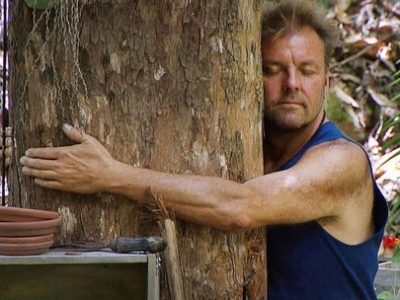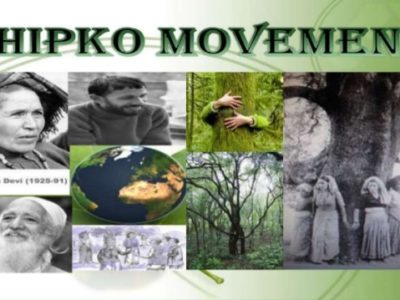More Tree-Huggers, Please
The Anti-Environmentalist Epithet Actually Derives From India’s Great Environmental Justice Movement

If you want to insult an environmentalist, the standard go-to is to dismiss them as a “tree-hugger.” But where does the term come from? The answer might surprise you:
The term ‘tree-hugger’ originated not as an insult but as a protest tactic. It is said to date back to 1730, when a village of Bishnois in India sacrificed their lives to save their sacred and resource-rich trees from being cut down to build a new palace for the king. This act of hugging a tree to defend the livelihood of the land was popularised nearly 250 years later when another group of Indian villagers, living in the Himalayas, brought together an ecological understanding of the effects of deforestation and Gandhian principles. In the 1970’s, women villagers embracing trees to stop loggers from cutting them down were termed the Chipko movement, ‘chipko’ meaning ‘hugging’ in Hindi. This turned into a national movement against commercial logging, and inspired indigenous and environmental activists outside India.

So it turns out that the tree-hugger epithet, far from reflecting elitism, actually derives from core environmental justice history. In India, the question of the forest transcends stereotypical environmental concerns, because the destruction of forests for “economic development” has been an element in a class and race war victimizing traditional tribal groups (now known as Scheduled Tribes) and lower caste groups, now known as Dalits and formerly referred to as Untouchables.
But if anything, we need to expand. As attorney Ritwick Dutta, trustee of the Legal Initiative for Forest and Environment, points out in a recent article in the Economic and Political Weekly, there is no national law protecting trees in urban areas: the law might protect forests, but within cities, developers and residents often pull down trees with impunity. On the one hand, it isn’t obvious why New Delhi and the Union bureaucracy need to get involved: land use is quintessentially local. But in an era where we will need to pull carbon out of the atmosphere, even isolated trees in urban areas are national and even international interest.
So more tree-huggers, please. If you get insulted by Republicans, or climate denialists and Rush Limbaugh dittoheads (but I repeat myself), then you know you are doing the right thing.
Reader Comments
2 Replies to “More Tree-Huggers, Please”
Comments are closed.







Can you have a tree and hug it too?
Trees pull carbon out of the atmosphere because they need carbon dioxide for photosynthesis. But they also need water. California’s new water conservation laws set permanent limits on the amount of water that water agencies can provide in urban areas for uses that include trees (landscaping). Consequently, fewer trees may be planted in urban areas and, if existing trees die or decay from lack of water, they will actually release carbon into the atmosphere.
Sometimes, the left-handed tree-hugger doesn’t know what the right-handed tree-hugger is doing.
I don’t know the specific about the regulations, but presumably drought-tolerant and other native trees would not violate the water limits. Do you have a link to the new conservation laws?